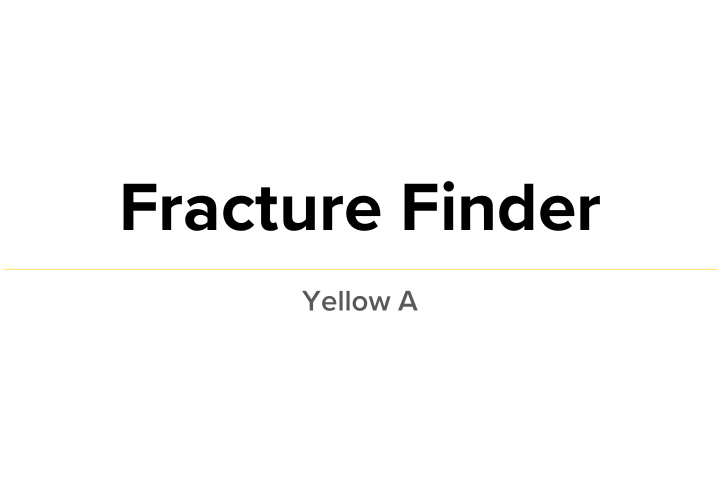



Fracture Finder Yellow A
Ineffective Diagnosing Common Concerns from Athletes, Doctors, and Trainers Stress injuries comprise 15% of runner ● injuries Stress fractures only show up 10% of ● time on x-ray Too long, difficult, and expensive to get ● an MRI
Design Concept Measures acoustic response ● through bone Compares healthy bone to ● injured bone to test for fracture
Detection Process Step 1 Step 2 Step 3 Step 4 Record Analyze the Sweep Determine response results in from 20 Hz presence of from two MATLAB to 3 kHz stress fracture ends of the bone
Product Contract PRODUCT ENGINEERING CUSTOMER NEED ATTRIBUTE SPECIFICATION Gives results within one Time to give results (mins) < 10 mins appointment Accurately diagnose stress Percent false detection <5% fractures # parts to constrain at a Easily used by single person <2 time
Key risks Data collection Trainer accessibility Diagnosis Criteria
Data Collection Bone-Conduction Headphones Dual-Head Stethoscope
Trainer Accessibility User tests with trainers showed that straps were the best model
Trainer Accessibility User tests with trainers showed that straps were the best model
Diagnosis Criteria We conducted bench tests with wood to analyze fracture data ● Pig legs were used to test real bone ● Useful PSD analysis for wood, but not pig leg ●
Next Steps Experiment on human stress fractures ● Diagnose human stress fracture ● Create simple user interface ●
References https://www.asics.com/us/en-us/lyteracer/p/0020003790.750 (shoe image) https://academic.oup.com/endo/article/139/2/663/2987138 (human/animal bone comparison) https://www.ncbi.nlm.nih.gov/pmc/articles/PMC4811848/ (stress fractures normally transverse) https://www.obimed.com/wp-content/uploads/2016/05/A-Novel-Method-of-Detecting-Fractures-Via-Smartphone-final.pdf (acoustic fracture detector) US20170150885A9, US20140100473A1 (similar patents)
Recommend
More recommend